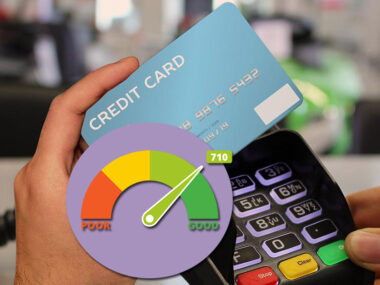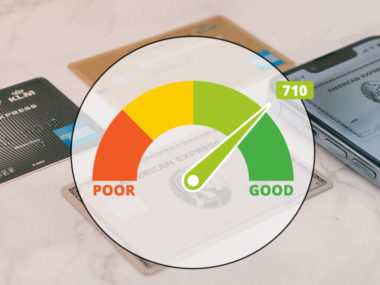An UltraFICO score is an alternative to the traditional FICO score, which will become available for consumers to use in 2019. It’s designed to leverage your financial history outside of debt and borrowing in order to help build your credit score. It’s a great alternative for those who are underbanked, rebuilding their credit, or who are too young to have built any credit history yet.
Table of Contents
What Is Opting In to UltraFICO?
Traditionally, lenders (like banks and credit card companies) report your data to credit scoring institutions. This data determines your credit score, and it includes: your payment history, the amount you owe on your credit or loans, the length of your credit history, and a few other factors based on how you handle credit. Your checking and savings accounts or cash payments usually don’t count in these reports.
Some consumers have found the traditional method for determining a credit score to work at their disadvantage. Young adults just starting out in their financial independence won’t have a credit history which could prevent them from getting their first credit card. It can also prevent self-employed, entrepreneurs, and immigrants from getting loans or the terms they want. Ideally, the UltraFICO score should help this group of consumers qualify.
If you have a good credit score, the new system won’t affect you. You have to request, or opt-in, to receive your UltraFICO score. Opting in enables you to have your bank account activity considered to help build your UltraFICO score without using loans or debt and slowly building a credit history. When the program is fully released, you’ll be able to use the FICO system to request that Experian (one of the major credit reporting agencies) enact the UltraFICO reporting system and start to gather the data needed to determine your new score.
What Accounts Can Be Linked to UltraFICO?
You will be able to select which of your accounts are used to gather data for your UltraFICO score, and which of your accounts are never seen by FICO, Experian, or Finicity. There are three types of accounts that can be used for your UltraFICO score:
Checking Accounts
Your checking accounts are the most likely account you’ll choose for your UltraFICO score. You can select which checking accounts are used and which are not. For example, you might have a personal checking account you use as your main checking account, and other as a joint account with a spouse or your child. You might select the personal checking account because it’s used more frequently, and works as a better representation of your financial and banking history.
Selecting one or more checking accounts provides the credit bureaus a glimpse of your budget in order to assess how much of your income is spent each month, if your bills are paid consistently, and whether or not you are saving each month or living paycheck-to-paycheck. This is a great way for you to prove that even though you don’t have debt or a line of credit, you are managing your money effectively and staying current with bills such as rent, utilities, or other recurring living expenses.
Savings Accounts
Similar to checking accounts, you can select savings accounts to be used for your UltraFICO score. Your saving account could show the credit bureaus that you’re consistently saving money each month and not living paycheck-to-paycheck. It shows responsibility and the ability to pay back a loan or line of credit if approved.
Money Market Accounts
A money market account, or money market deposit account, is like a savings account, but it pays interest based on current interest rates in the money markets. If you have money market accounts that have been growing with consistent deposits, choosing to include them in your UltraFICO score could prove your ability to save responsibly and repay debts when needed.
Finicity is the only company that will collect specific data from your accounts and compile it into a report for Experian to use to determine your UltraFICO score. Your transactional data never gets shared outside Finicity handling it for the report. Experian will then issue your new UltraFICO score to the credit reporting agencies so it’s available for lenders to use.
What Gets Reported and How Do Linked Accounts Affect UltraFICO Credit Scores?
The linked accounts you selected for your UltraFICO score could improve your credit score by up to 20 points. Any changes will be determined based on these factors:
Evidence of Savings
The UltraFICO score will take into account any evidence of savings that your bank accounts listed above might show. This is why it’s a good idea to include savings accounts in your UltraFICO report. We don’t yet know exactly how much of an impact your evidence of savings will make on your UltraFICO score, but it could be similar to FICO’s credit utilization category, measuring how much of your income is owed each month and making up 30 percent of your total score.
Maintaining Bank Accounts
FICO’s traditional scoring model weighs the average age of your credit history at 15 percent of your total credit score. This category is similar to UltraFICO’s promise to use your bank account information to determine how well you’ve maintained your accounts, meaning how long the account has been in good standing with your bank and average balances. But we don’t yet know exactly how account maintenance will be determined how how heavily it will weigh on your overall UltraFICO score.
Healthy Average Balance
UltraFICO will also consider the average balance of the accounts you select to use in the report. A healthy average balance generally means you’ve kept a minimum balance of at least $400 in your account. We don’t yet know how heavily your average balance will factor into your score, but it could be similar to that of your evidence of savings/credit utilization, so it’s a good idea to work on building up both the balance in your checking and savings accounts.
Avoiding Overdrafts and Negative Balances
If you are consistently building your savings and maintaining a healthy balance in your checking account of at least $400, then you probably don’t have to worry about overdrafts and negative balances. However, a recent emergency or unexpected expense could have taken your funds to new lows, or even into the negative. Overdrafts and negative balances, like derogatory marks on your traditional FICO score, will reflect on your UltraFICO score and could keep it from improving your credit score at all.
Regular Payment Activity and Paying Bills
Similarly, your FICO score weighs heavily on the payment history of your loans and credit accounts, but UltraFICO will look at the regular payment activity of your checking and savings account to determine if you pay your other bills on time, like your utility and phone bills for example. This category could weigh heavily on your total UltraFICO score so it’s important to keep up on those bills.
The main difference in reporting for your FICO and UltraFICO score is the fact that FICO looks at your credit and UltraFICO looks at your bank accounts. They shift an emphasis from borrowed money to your own money and how well you manager your finances. At this time, we do not know how heavy each category listed above will weigh into your UltraFICO score, but it may be similar to FICO’s categories.
UltraFICO Reporting: Benefits of Opting In
If you have been denied credit or a loan due to your low or non-existent FICO credit score, the UltraFICO score could help you get approved. It could increase your credit score by up to 20 points which could be the difference in qualifying for your credit.
However, it’s still unclear what the unintended consequences might be. For example, a hard credit check could lower your score before you’ve even had a chance to opt-in to UltraFICO. Privacy is also a concern because even more of your personal bank and transaction data will be used by credit reporting companies. It’ll be up to you to decide if that loan or line of credit is worth the risk.
Image Source: https://depositphotos.com/





